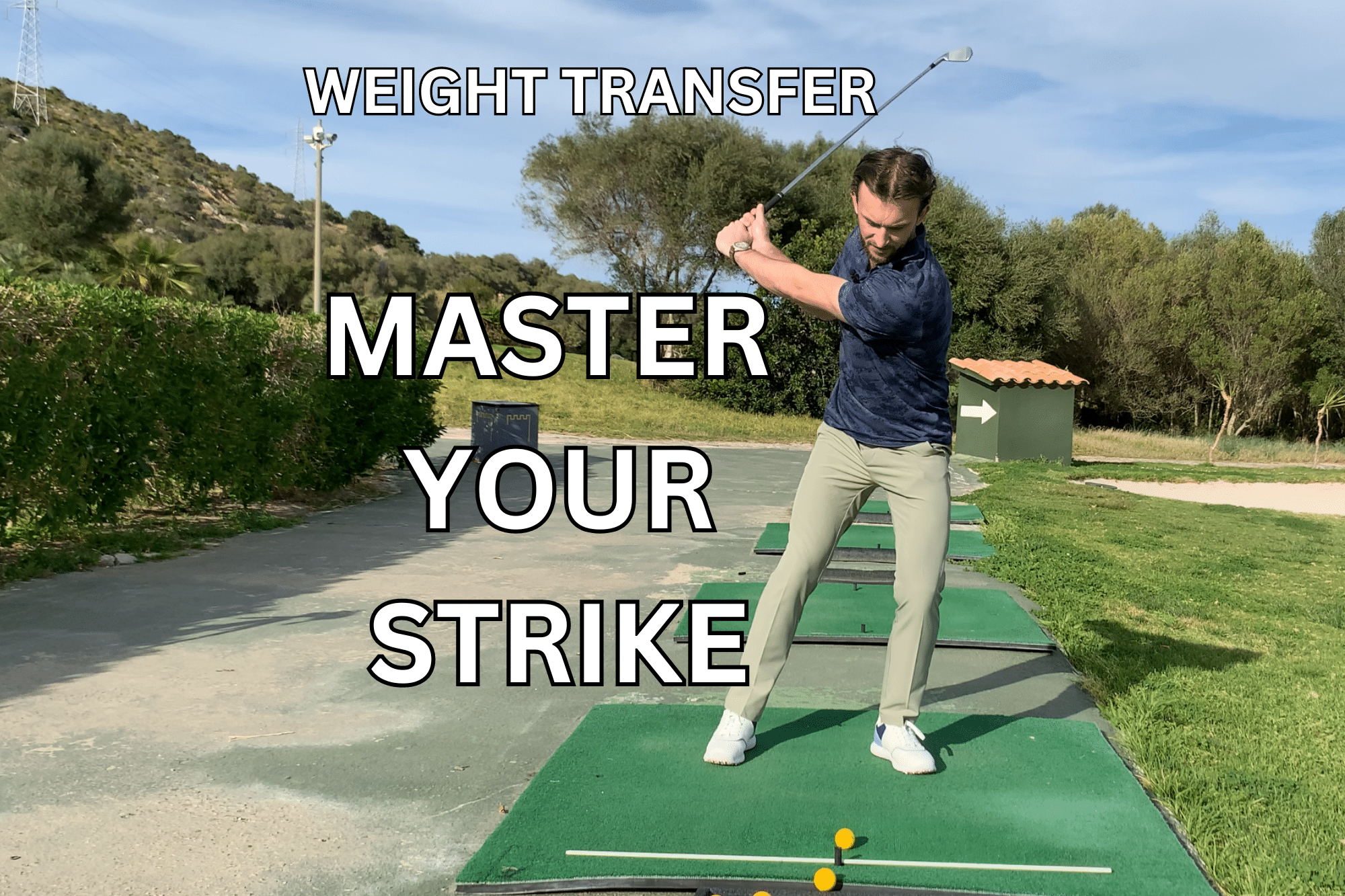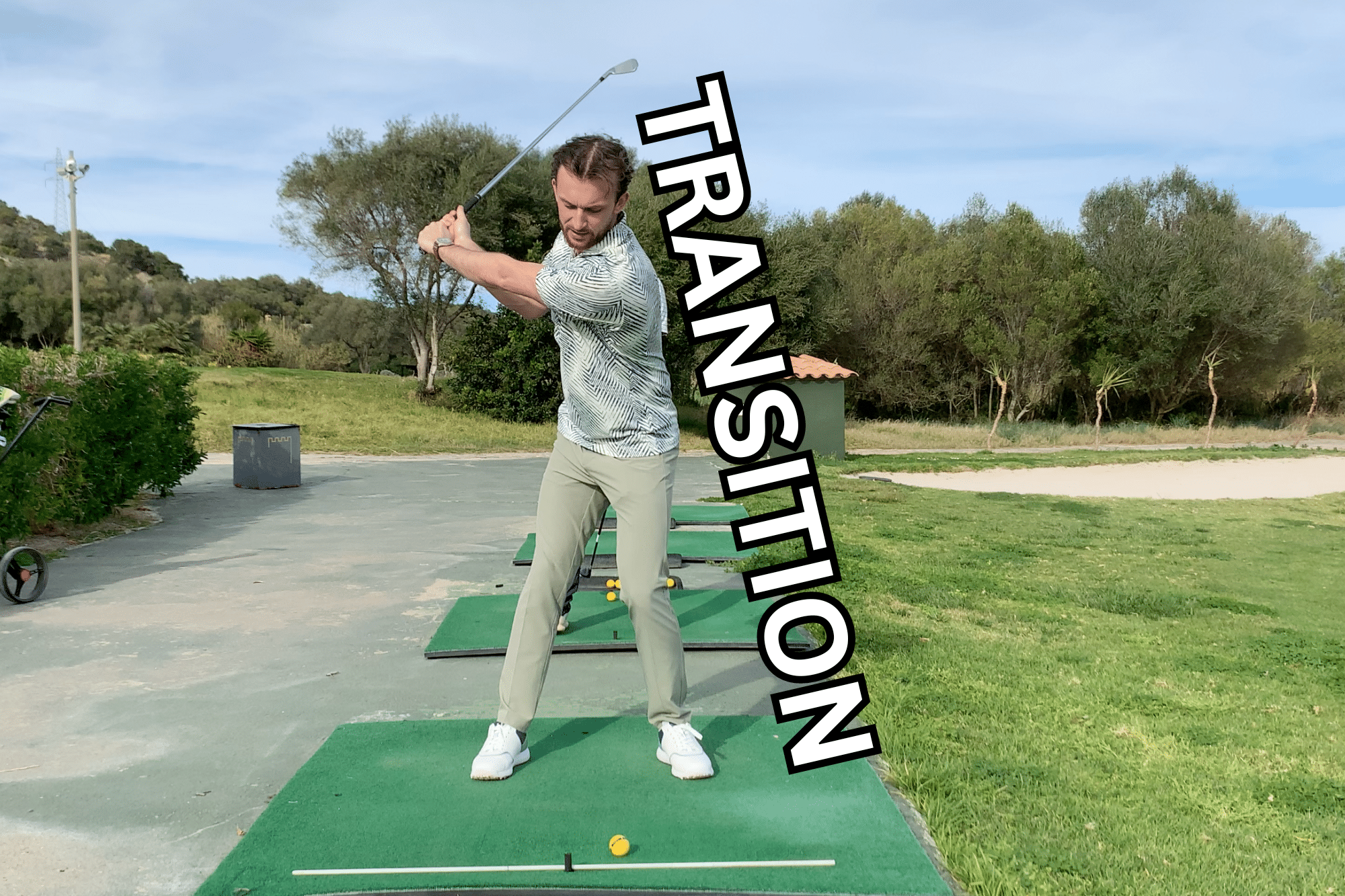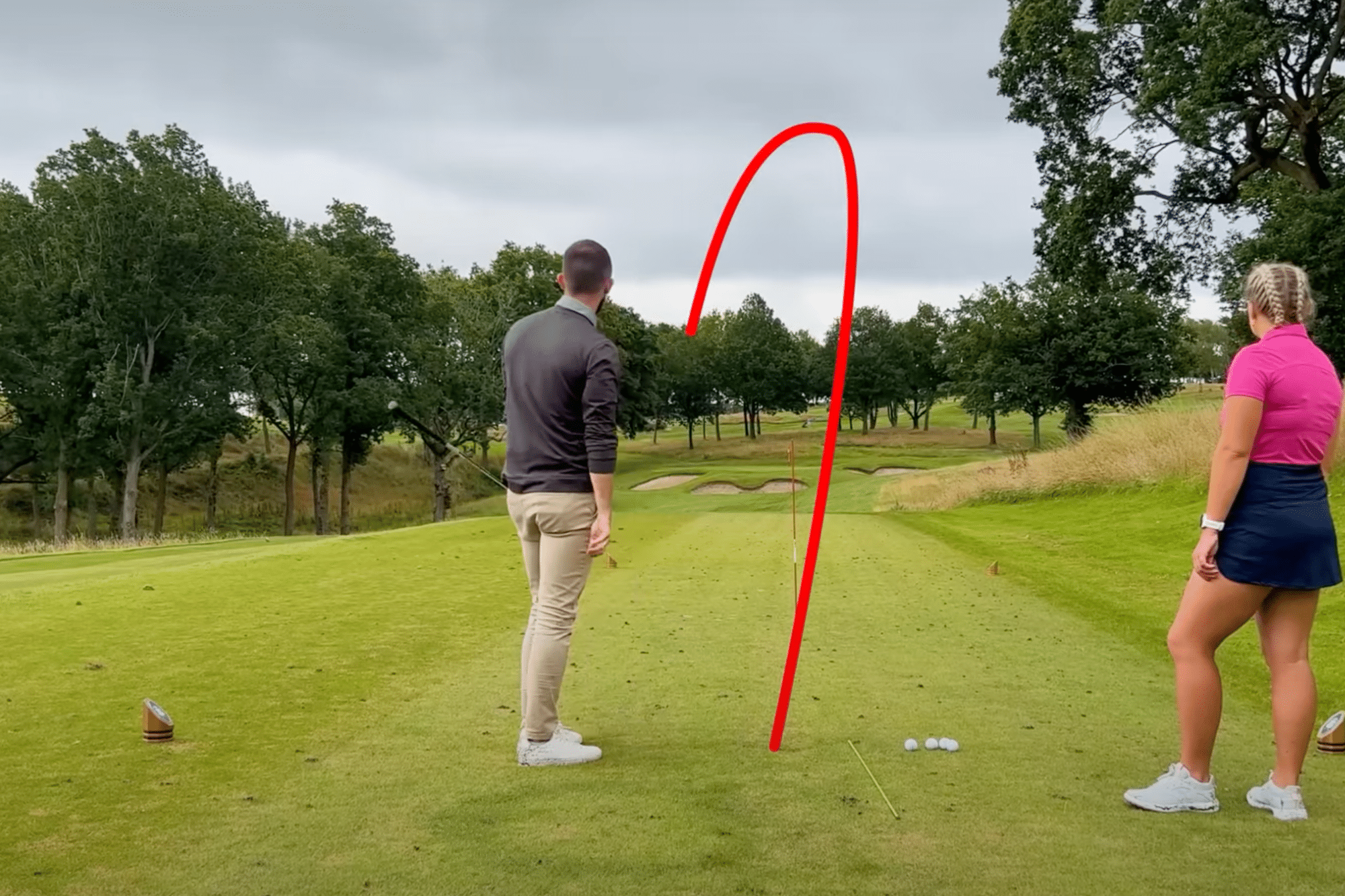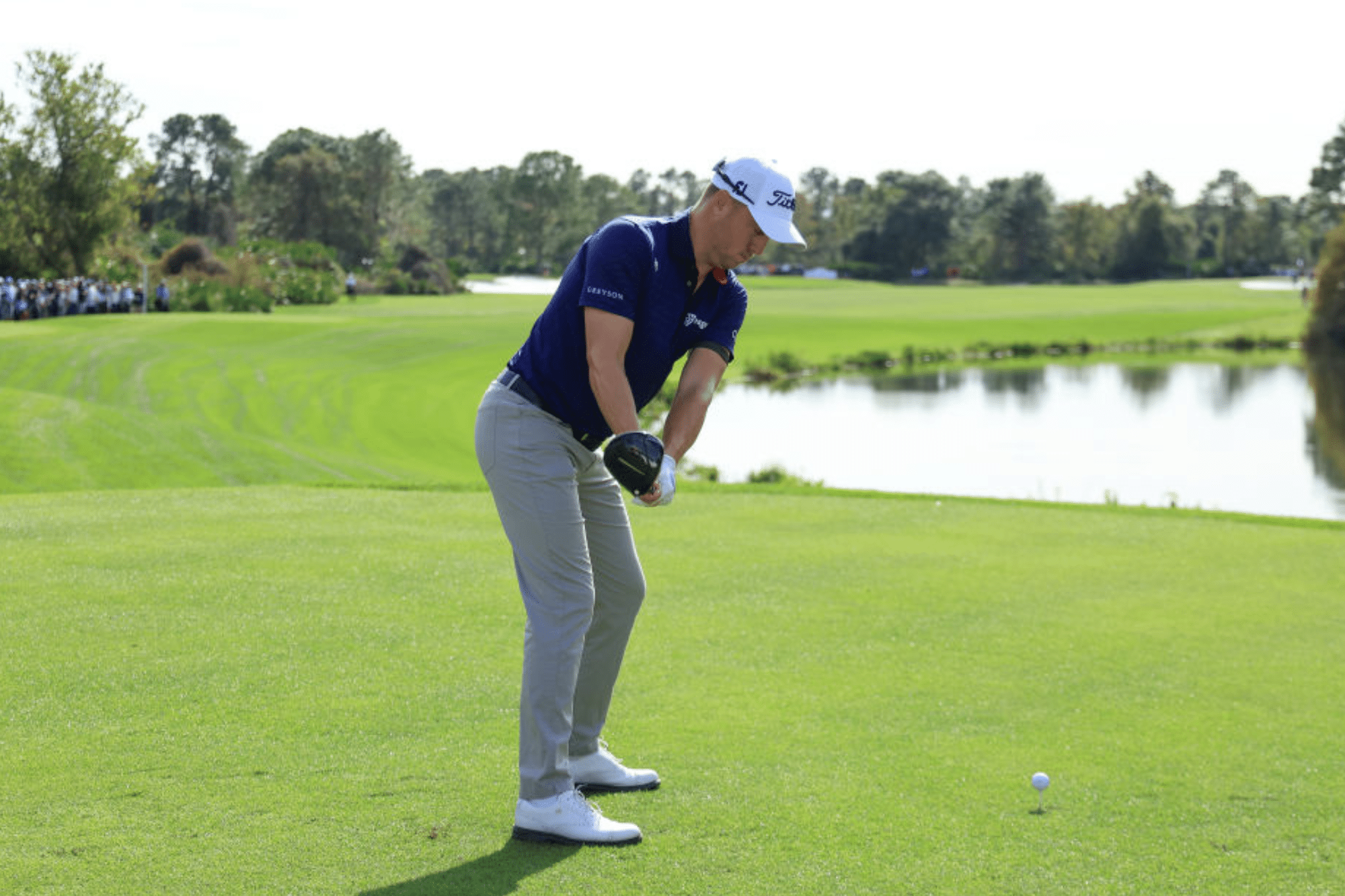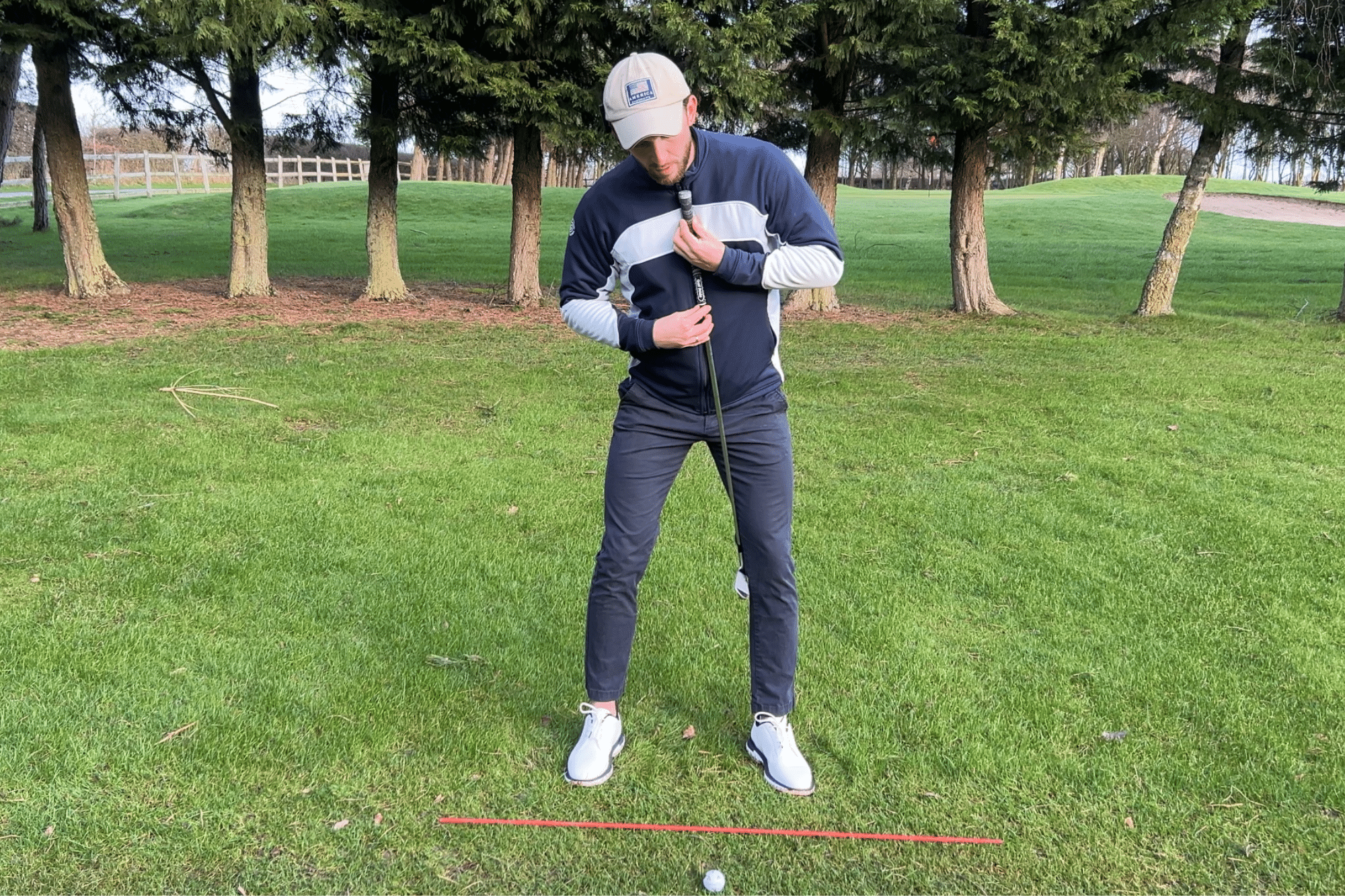
How far should you hit your golf clubs?
How far do you need to hit the golf ball to lower your handicap? Hannah Holden breaks down all the Shot Scope data to find out
How far does the average golfer hit each club in their golf bag? It seems like a simple question, but the reality is it varies massively depending on various factors.
It can be easy to think you don’t hit the golf ball far enough when comparing yourself to a PGA Tour player such as Rory McIlroy, who we see on our TV weekly, but the reality is the average male and female golfer hits it much shorter than their professional counterparts.
- RELATED: How far do club golfers actually hit their drivers?
- RELATED: Golf ball roll back – what does it all mean?

Average golf club distances
Shot Scope data shows the distances you hit each golf club varies massively depending on your skill level. In fact, for amateur golfers, the most significant statistic that correlates to a lower handicap is hitting the golf ball further.
Every club in the bag has a different use and is designed to hit the ball a different distance. For example, a pitching wedge has a lot more loft than a 5-iron, meaning the wedge will travel higher and nor as far.
If we look across the 7-iron data below, a scratch golfer typically hits this club 157 yards. That’s 57 yards further than a 25-handicap golfer, but 14 yards shorter than the average PGA Tour professional.
The biggest difference in hitting distance comes in the 3-hybrid category, where scratch golfers are gaining 73 yards over 25-handicap golfers. That is a ludicrous amount of distance to be giving up!
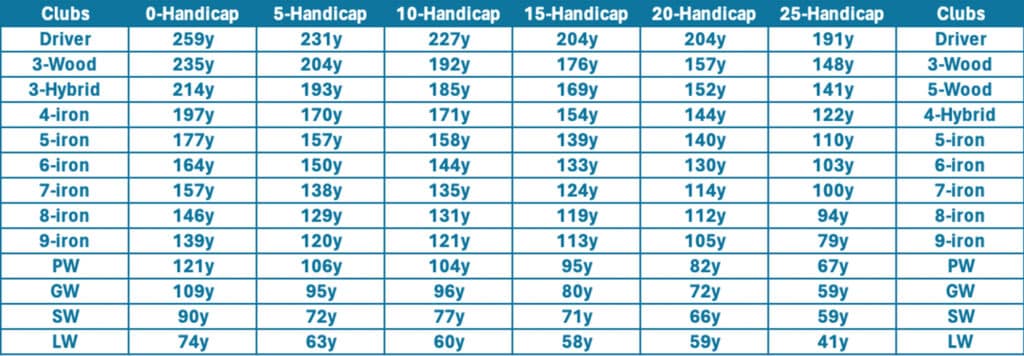
Average distances for scratch golfers
Through the bag, scratch golfers gain, on average, as much as 69 yards over a 25-handicapper. This means on a 400-yard par-4, the average scratch golfer would only need to hit driver, 9-iron compared to a driver, 3-wood and a lob wedge for a 25-handicapper. That is a serious shot-saver.

Average distances for 5-handicap golfers
On average, 5-handicappers hit it about 30 yards shorter through the bag than a scratch golfer.

Average distances for 10-handicap golfers
The smallest gap in yardage distances came between 5- and 10-handicappers. In fact, with some clubs, 10-handicap golfers hit it further than 5-handicappers. You can especially see this in the 4-iron data.

Average distances for 15-handicap golfers
Once you get to 15-handicap, we see big drop-offs in distance at the top of the bag. 16 yards less distance with a 3-wood will make it very hard to reach long par-4s in regulation.

Average distances for 20-handicap golfers
Interestingly, we see golf club set-ups change for 20 handicappers and above with more woods in the bag. Typically, they have smaller distance gaps between their clubs, so they tend not to carry as many wedges.

Average distances for 25-handicap golfers
This is the first handicap category where the average driving distance drops under 200 yards. You can see lots of the total distances are very similar with each club. This would suggest players would benefit from clubs with a lower CG to get more height and hang time on their shots, such as the TaylorMade Stealth HD irons.

So what can we learn from these numbers?
Well, you can significantly improve your handicap by increasing your swing speed and, with it, your total distances.
Increasing your driver distance will get you closer to the green for your approach, but having a faster club head speed will mean you can hit less club into every green too.
I would also say it is important to keep checking your club distances over time and evaluate what clubs you are carrying in your bag. If you have two clubs that carry very similar distances – such as 5- and 6-iron – you may be better off adding in a 5-hybrid to get better more consistent gapping, or using a combo set and adding in longer, faster irons.
What factors affect your golf club distances?
So, how can you ensure you get consistent distances from each of your clubs?
Clubhead speed
The key factor affecting how far you hit the golf ball is your average swing speed with each club. Increasing your clubhead speed is the best way to increase your carry distances as it gives you more potential to hit the golf ball further.
If you want to know how to increase your driver swing speed and driver carry distance, you can get some tips from world-long drive champion Kyle Berkshire in the video below…
Ball speed
Ball speed is a measure of how fast your ball leaves the club head after impact. A mis-hit off the heel or toe will cause a drop in ball speed compared to a centre strike, even with the same clubhead speed.
Smash factor
Hitting the sweet spot of the club consistently will really help with your average carry distances.
Smash factor is your ball speed divided by club speed. It shows you how much energy has been transferred from the clubhead to the ball. The higher the figure, the more efficient your strike is. A higher smash factor will help you hit the ball further without increasing your club head speed.
Getting some lessons to tidy up your technique, will get you striking the ball more consistently out of the middle, which will also help you see carry distance gains.
Golf clubs
What type of golf clubs you use will have a massive effect on how far the golf ball travels. Someone using traditional blade irons would have to swing the club quicker and strike it better to get the same distances as someone using game improvement irons.
The weight and flex of the shafts in your golf clubs can also affect your distances. If your shaft is too heavy, or stiff, it will be really hard for you to generate maximum speed or strike the golf ball efficiently.
Both these things will cost you valuable yards.
Age
Generally, as golfers get older, they can’t hit the ball as far. But do not fear, this can be mitigated with regular exercise. Stretching and lifting weights are great ways to stay healthy and continue to hit the golf ball further.
Learning your yardages: How to work out your average distances
The best way to work out your initial carry distances is to book some time on a launch monitor, hit every club in your bag, and get an average of the carry distances.
It is important to include a representative mix of shots here and not just the shots you hit the best. You want the average to be playable on the golf course, so keeping slight mishits in is essential.

It is also a good idea to create a golf club distance chart so you have a physical record of how far each of your clubs goes so you can reference this out on the course.
Once you have done this you want to be able to collect more accurate data out on the course. Using a Shot Scope tracking device is the perfect way to do this.
I use my Shot Scope V3 watch to track my statistics. The watch features a performance tracking system that collects data on each shot I hit on the golf course and can generate more than 100 statistics to help me improve my game. For distances, it produces an average of how far I hit each club.
The main average includes all shots hit with each club, the P-Average removes good and bad outliers to give a more accurate average. It is important to remember this is a total distance number so includes your carry distance and any roll out you get after the ball lands.

As this data is built up over time, it can become incredibly accurate and give you great insight into how far you are actually hitting the golf ball out on the course.
Getting to know your distances for each club is one of the best ways to lower your scores as you can more accurately pick what clubs to hit into greens and stop yourself from making the fatal error of always coming up short.
- RELATED: Shot Scope have added style to the substance – but how does the V3 smart watch perform?
- RELATED: The GPS that does everything? Shot Scope Pro LX+ review
Hannah Holden

Hannah Holden is the Equipment and Instruction Editor here at National Club Golfer. If you’re looking to improve your game, by changing your golf swing or upgrading your golf equipment she’ll have the answers.
As well as writing lots of features and reviews you can find her on our YouTube channel giving you insights on the latest rules, clubs and tips to improve your golf game.
Hannah is a member at Alwoodley golf club. You will either find her here or driving up and down the country playing in a variety of elite amateur events.


